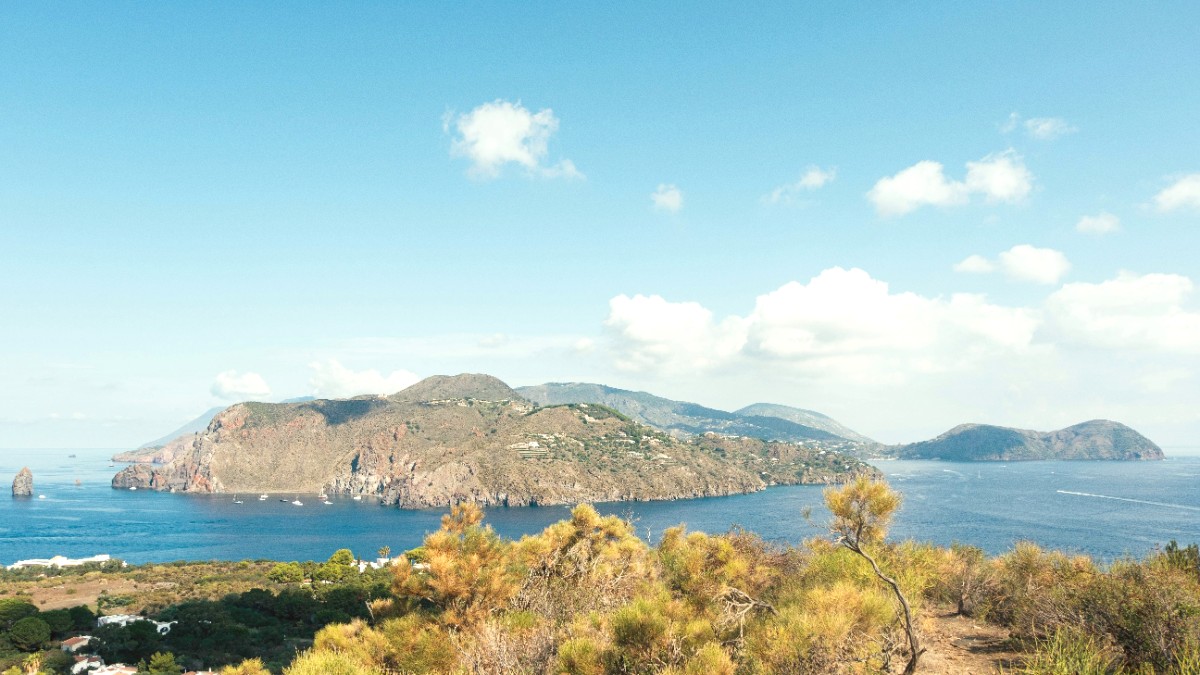
Italy
The Aeolian Islands have a classic Mediterranean climate. This means hot, dry summers and mild, wetter winters. Summer (June-August) brings high temperatures, generally 25°C to 30°C (77°F to 86°F), often exceeding 35°C (95°F) in July and August. Humidity remains high, making the heat feel more intense. Rainfall is minimal, with long periods of sunshine. The sea temperature is at its warmest. Spring (April-May) & Autumn (September-October) have pleasant warmth, with average temperatures from 18°C to 25°C (64°F to 77°F). You might see occasional, short-lived rain showers. Winter (November-March) has cooler temperatures, typically 10°C to 15°C (50°F to 59°F), with more frequent rainfall and stronger winds.
Stromboli is continuously active, with minor eruptions. Vulcano has fumarolic activity, which leads to strong sulfur smells. Check local advisories before visiting active sites. As of late 2023/early 2024, the Gran Cratere on Vulcano has restrictions due to increased gas emissions. Always confirm current access rules.
Strong winds, especially prevalent in winter, cause rough seas and lead to ferry or hydrofoil cancellations and delays. This is an important factor to consider, specifically if you have tight flight connections.
Crowds & Highest Prices
All tourist services operate at full capacity. Lively atmosphere with nightlife. Frequent ferry and hydrofoil schedules.
Significant crowds, especially on popular islands. Prices for accommodation and services reach their highest. Intense heat may make strenuous activities uncomfortable.
Pleasant & Fewer Crowds
Pleasantly warm temperatures, ideal for outdoor activities. Fewer crowds than high season. Better accommodation prices. Sea often warm for swimming.
In late October, some services begin to close. Ferry schedules might slightly reduce.
Tranquility & Lowest Costs
Unique, tranquil experience with few tourists. Authentic local island life. Lowest prices for accommodation and services. Lush, green landscapes.
Many hotels and tourist services close for winter. Limited ferry schedules, potential for cancellations/delays due to weather.
The official currency is the Euro (€). ATMs ("Bancomat") are available on larger islands (Lipari, Salina, Stromboli, Vulcano). On smaller islands, ATMs may be limited. Carry some cash for smaller purchases or remote areas. Major credit cards are widely accepted in larger establishments. Inform your bank of your travel plans.
Tipping is not mandatory in Italy. Restaurants sometimes include a service charge (`coperto` or `servizio`) on the bill, which covers bread and table service. If not included, or for good service, leaving a small tip (a few euros) is customary. Rounding up the bill to the nearest €5 or €10 is a common practice.
Prices for accommodation, flights, and tours are significantly lower outside of July and August.
Choose the slower, larger ferries (`traghetti`) over faster hydrofoils (`aliscafo`) for inter-island travel; they are generally cheaper.
Lipari has the most extensive ferry connections and widest range of options, potentially lowering day trip costs.
If your accommodation has kitchen facilities, buy fresh produce and seafood from local markets.
On Lipari and Salina, local bus services connect main towns and beaches; use these instead of taxis.
This section covers important medical information, general safety advice, and emergency contacts.
No specific vaccinations are required for entry to Italy beyond routine vaccinations. Consult your doctor or a travel clinic 4-6 weeks before your trip for personalized advice.
The Mediterranean sun can be intense. High temperatures and physical activity elevate dehydration risk. Mosquitoes appear, especially during evenings. Jellyfish stings occur occasionally.
Ensure you have the following documents ready for your trip: